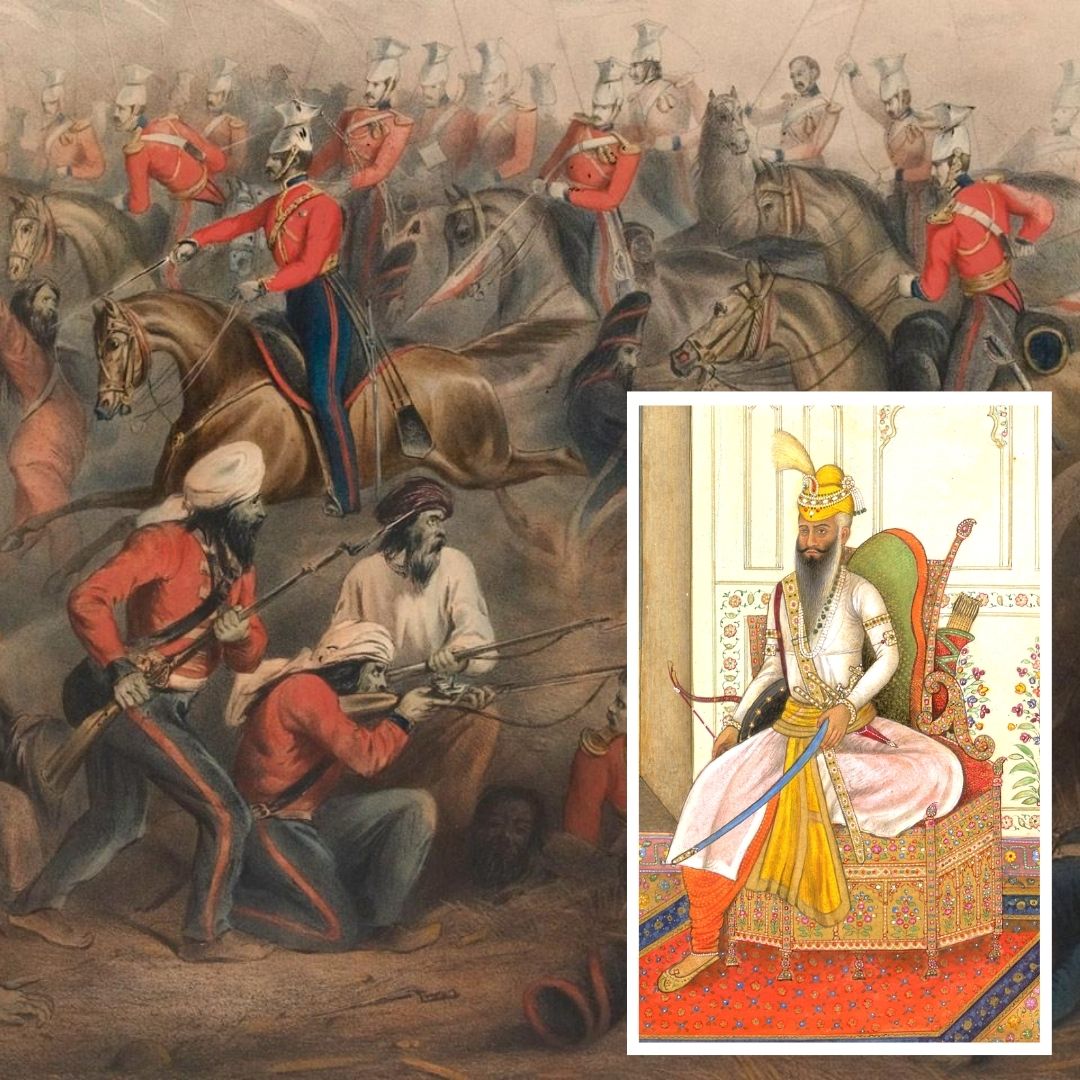
Image Credit- Wikimedia, National Army Museum
Maharaja Ranjit Singh: Remembering Sikh Empire's First Leader And His Contributions To Modernising Khalsa Army
Writer: Mrinalini Kaushik
She is a student of journalism, keen on learning new ways to unlearn, deconstructing news and life. Interested in exploring new media as medium is the message. Avid follower of sports and politics
India, 27 Jun 2022 9:14 AM GMT
Editor : Shiva Chaudhary |
A post-graduate in Journalism and Mass Communication with relevant skills, specialising in content editing & writing. I believe in the precise dissemination of information based on facts to the public.
Creatives : Shiva Chaudhary
A post-graduate in Journalism and Mass Communication with relevant skills, specialising in content editing & writing. I believe in the precise dissemination of information based on facts to the public.
On his death anniversary, here's a look at Ranjit Singh's reforms in the Khalsa Army, from defeating foreign invaders of northwest Asia to the Britishers. He ruled the northwest Indian subcontinent in the early half of the 19th century.
Maharaja Ranjit Singh was called the 'Sher-e-Punjab' or the 'Lion of Punjab'. His death anniversary is observed every year on June 27 when Sikhs from all over the world pay pilgrimage to him in his resting place near Lahore, Pakistan.
Before his reign, the Punjab region consisted of multiple small-scale confederacies called misls, governed by different rulers. He successfully brought all misls together and united the Sikh kingdom, becoming the first leader of the whole Sikh empire in the northwest Indian subcontinent.
Furthermore, Ranjit Singh introduced various reformations in the very infrastructure of his Khalsa army to modernise it. His army included many Europeans, Hindus, and Muslims alongside Sikhs.
Modernising Khalsa Army
The Khalsa Army is a Sikh army force formed by Guru Hargobind in 1598, which used to be a cavalry unit at the time of Guru Gobind Singh. It was not until Maharaja Ranjit Singh's takeover and unification of misls that the Khalsa army became organised. He divided the army into three regimes- Fauj-i-Khas (elites), Fauj-i-Ain (regular force) and Fauj-i-Be Qawaid (irregulars).
Ranjit Singh tried to incorporate European Franco-British war principles by learning from the western forces and officers. The training style improved, and semantic areas of troop deployment, marksmanship, manoeuvre and logistical efficiency were considered significant criteria for the army's performance standards.
Under his guidance, the Khalsa army combined the old and new schools of military disciplines to strengthen itself and become one of the greatest armies in Asia.
Diversity In The Army
Ranjit Singh used to flip East India Company army deserters into training his Khalsa soldiers. Moreover, he sent his men to study British methods of war tactics.
In the 1820s, he even employed veterans from the Napoleon wars, such as General Jean-Baptiste Ventura, to train the infantry and General Jean-François Allard to teach French patterns and modern warfare, moving out of the guerilla fighting style.
The army also included many Hindus from the Gangetic plain areas, especially in infantry regimes such as Afghans, Punjabi Muslims and Gurkhas. Joining the military was entirely voluntary, without distinction of class, caste or religion.
Also Read: Water More Expensive Than Petrol: Assam's Flood Situation Still Bleak With 22 Lakh People Affected
 All section
All section













